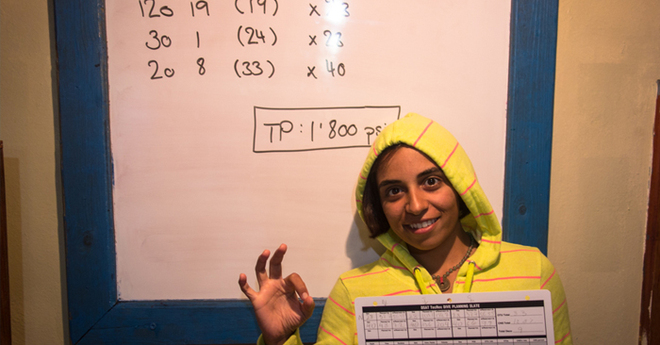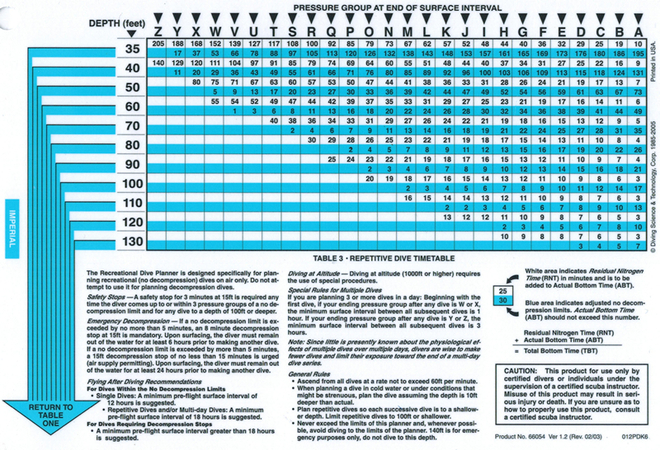As a dive instructor, I spend quite some time explaining the dive tables to my entry-level divers. We work through the numbers and turn slates over and over, doing calculations and drawing profiles until it makes sense.

But when I guide fun dives, I rarely see anyone use the skills that they worked so hard to master. We learn that it’s not safe for two divers to share a dive computer, but yet many divers that I have guided were happy to leave all the responsibility for planning their dive to me. In nine months, only a handful of customers ever asked me whether we would stay within the table limits.
Many divers forget that a dive guide’s role is to show them the dive site, point out interesting creatures and features, and to take care of their customers in an emergency situation. Briefings include a standard time and depth limit, and these limits should be used as guidelines for a certified diver to plan his or her individual dive.
Tools to assist in planning your dive
There are a variety of tools available to assist in planning your dive and many modern computers include both a timing device and a depth gauge. These can be used in conjunction with any form of recreational dive planner to calculate your personal bottom time and depth limits. For those who find it confusing to struggle through the technicalities of dive tables, many new electronic versions do all the calculating for you.
Staying within your personal limits
Standard dive equipment should include a timing device as well as a depth gauge, and divers should use it to to control their depth and ensure that they stay within their qualification and no-deco limits. Though a good dive guide should assist divers in planning their dives, it is ultimately the diver’s own responsibility to control his or her depth and bottom time.
Although dive guides take their customers’ certification limits into consideration during the briefing on the general dive plan, divers must be cognizant of their personal dive limits, and should include these when they plan their dives. Factors like physical fitness, date of last dive, experience and comfort in the water all play a role.
Plan your dive and dive your plan, but have a contingency and abort dives if necessary
When you’ve planned your dive, stay with that planned depth and time. You don’t need to go to your limit every time; shallower and shorter dives are often enjoyable, with many things to see.

The temptation to stray from your plan can be strong, especially if you spot a unique creature hiding a few feet deeper than your planned depth. It is a good idea to have a contingency plan to cater for this by planning your depth to be a few feet shallower than your absolute maximum, as dictated by your certification level.
Remember that although diving is a recreational sport, your safety and that of those around you comes first. It is always wise to return to a shallower depth — or even cut your dive short — if you find yourself in unsafe or strenuous conditions. Better to return to the site in more favorable conditions, which will offer you a more enjoyable, and perhaps memorable, dive.

